eCarsTrade Blog

Is It a Good Idea to Buy a Used Fleet Vehicle?
Feeling unsure of whether ex-fleet cars would sell? We’ll show you why these vehicles perform well, what to check before buying, and how to move them quickly at your dealership.
28 November 2025
Car Taxes in Finland - Guide for Car Dealers
Understand the main car taxes in Finland and see what you’ll pay when importing used cars from the EU or outside the EU.
25 November 2025
How to Import a Car to Moldova
Learn the documents, taxes, and steps required to import used cars to Moldova. Find out how duties work and what businesses need before importing a vehicle.
23 November 2025
Car Taxes in Denmark - Guide for Car Dealers
Learn how to calculate car taxes in Denmark, check VAT schemes, and plan for 2026 tax updates to keep your prices accurate and sales profitable.
7 November 2025
EV Charging Standards and Compatibility Across the EU
Get a clear overview of Europe’s EV charging: Type 2 vs CCS2, AFIR categories, and dealer tips on how to choose stock and answer buyer questions.
4 November 2025
Car Taxes in Sweden - Guide for Car Dealers
Importing or selling cars in Sweden? Plan the costs and see what car taxes apply, from the yearly vehicle tax and malus surcharge, to type approval for non-EU imports and more.
22 October 2025
How to Import a Used Car to Morocco
Start importing used cars to Morocco by learning what documents you need, what cars you can import, and which taxes you’ll pay.
22 October 2025
How to Import a Used Car to Serbia
Follow this guide on importing used cars to Serbia to learn which documents you need, how customs duty and VAT are calculated, and what rules to follow.
16 October 2025
Plug-in Hybrids With the Best Battery Longevity
Discover the top plug-in hybrids with the best battery longevity in Europe. Learn about range, warranties, and tips to extend PHEV battery life.
29 September 2025
Car Taxes in Romania - Guide for Car Dealers
Learn about all the car taxes in Romania for 2025 (VAT, registration fees, Rovinieta, Impozit auto) and see what changes are coming in 2026.
22 September 2025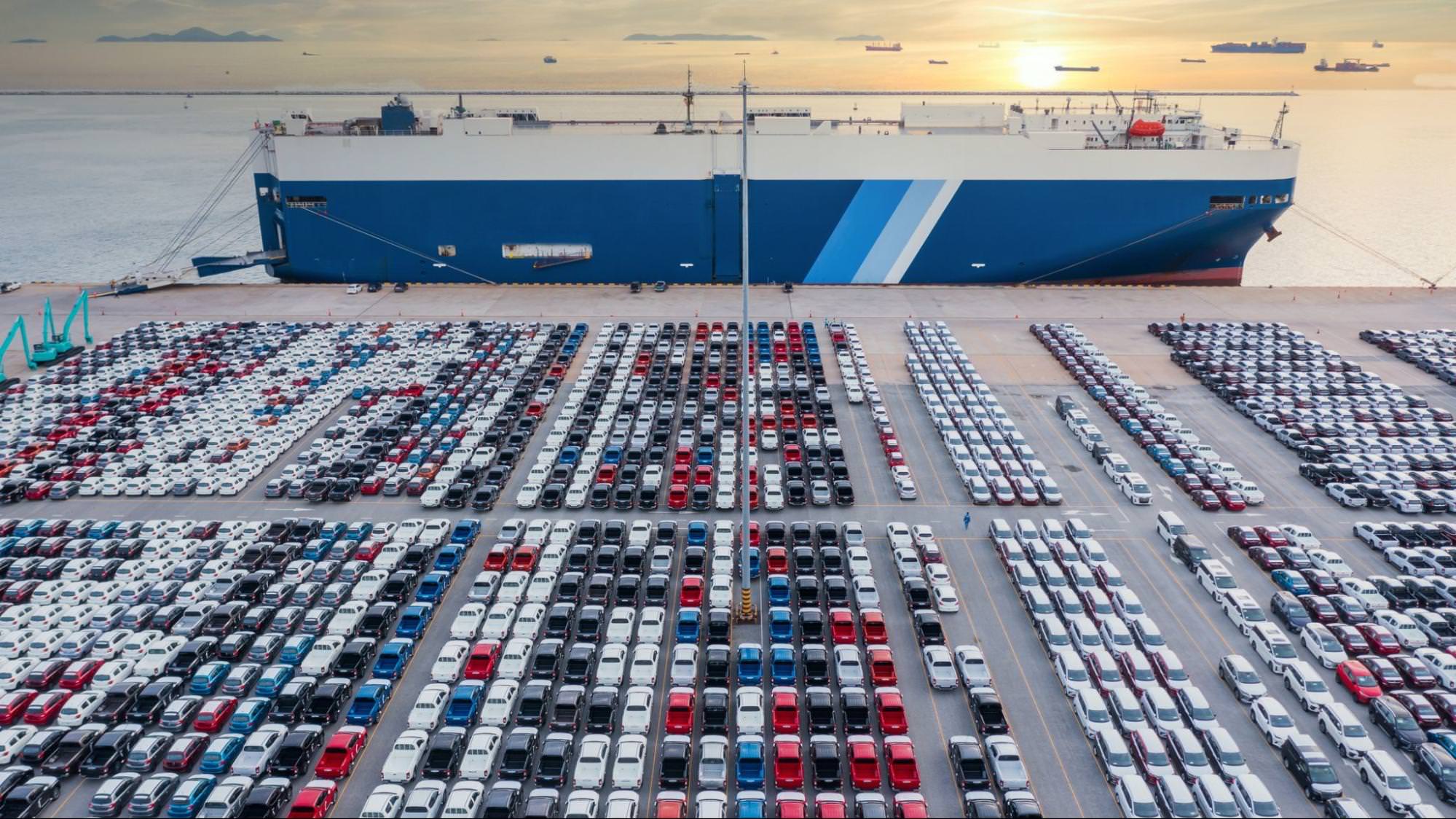
How to Export Cars from the EU: Guide for Non-EU Buyers
You can easily buy and export cars from Europe by learning about the key rules, documents, and steps for non-EU buyers.
18 September 2025
How to Import a Used Car to Algeria
Want to import cars from the EU to Algeria with ease? Find out the key rules, prepare the right documents, and check the taxes step by step for a smooth process.
12 September 2025
How VAT Works When Buying and Importing Used Cars From the EU
Find when you can reclaim VAT on cars in the EU or when exporting. You’ll learn the difference between VAT deductible and margin cars, how VAT deposits work, and how to make sure your VAT refund goes smoothly.
11 September 2025
Calculating Denmark’s Registreringsafgift Tax
Learn how to calculate Denmark’s registreringsafgift in 2025. You'll see tax brackets, CO₂ surcharges, EV deductions, and real examples for petrol, electric, and commercial vehicles.
8 September 2025
How to Import a Car to North Macedonia
Learn how to import cars to North Macedonia with a clear step-by-step guide, from buying in the EU to handling EX-A, VAT refund, and customs.
5 September 2025
The Future of Ice Vehicle Sales in the EU After 2035
Find out what the 2035 EU petrol and diesel car ban means for car dealers, how it affects ICE and hybrid sales, and how to prepare your stock.
4 September 2025
Potential Issues and Challenges With Importing Used Cars
Discover the most common challenges when importing used cars and how to handle them, so you can avoid delays and keep your imports running smoothly.
29 August 2025
Regional Used EV Adoption Rates
See where EV adoption is growing fastest in Europe and which markets offer the best opportunities for buying and selling used electric cars.
26 August 2025
Car Taxes in Poland - A Guide For Car Dealers
Find out what car taxes you need to pay in Poland when buying, selling, or importing used vehicles, and see what EV incentives are there in 2025.
14 August 2025
How to Estimate The Value of Trade-Ins More Accurately?
Learn how to value trade-ins more accurately with simple steps, smart pricing tools, and practical tips to boost your dealership’s profits.
13 August 2025
Demand for Hydrogen-Fuelled Vehicles in Europe - Should Dealers Pay Attention?
Find out where hydrogen vehicles stand in Europe today, how they compare to EVs, and what car dealers should know about future demand and opportunities.
13 August 2025
How to Import a Car to Montenegro
If you’d like to start importing used cars to Montenegro, here’s what you need to know about documents, taxes, and the full import process.
6 August 2025
Which Car Taxes Do You Need to Pay in Spain
Get a clear overview of car taxes in Spain, including IVA, IEDMT, IVTM, and learn how to calculate, deduct, and pay them as a dealer.
15 July 2025
NOx Tax in Europe - Everything You Need to Know
Find out how NOx tax works across the EU, where it applies, and what it means for used car imports.
27 June 2025
Are Used Cars Getting More Expensive in Europe in 2025?
Get clear insights into 2025 used car market trends, including price changes, regional demand, and performance by fuel types.
26 June 2025
How to Import a Car to Sweden
Importing used cars to Sweden? This guide covers documents, taxes, and step-by-step procedures to help you import smoothly.
20 June 2025
Battery Degradation in Used EVs
Find out how EV batteries age, what affects their lifespan, and how to check battery health when buying or selling used electric cars in the EU.
18 June 2025
Everything You Need to Know About Estonia’s New Motor Vehicle Tax
Learn how Estonia’s new motor vehicle tax works in 2025 and what it means for car traders. Get clear info on annual tax, registration fees, and how to calculate them.
15 June 2025
How to Import a Car to Denmark
Importing cars from abroad into Denmark can be simple and profitable. Learn what documents, taxes, and steps you need to get started.
30 May 2025
How to Import a Car to Finland
Learn how to import a car to Finland step by step. From documents to taxes, this guide covers everything you need to start importing used cars from the EU.
28 May 2025
EV Battery Passports - Everything You Need to Know as a Car Dealer
Learn what the EU battery passport means for used EV dealers. See what’s changing under the EU battery regulation and how to prepare before 2027.
21 May 2025
The Impact of Chinese EV Brands Entering the European Market
Find how Chinese electric car brands are reshaping the European EV market. Learn about their competitive pricing, and discover how your dealership can adapt to these changes.
20 May 2025
Impact of Tariffs on the European Used Car Market
Find out how new U.S. tariffs could impact the EU car trade and what your dealership can do to stay ahead.
19 May 2025
Choosing Between CRM and DMS for Your Car Dealership
Not sure if your dealership needs a CRM or a DMS? Learn which tool fits your dealership best, and discover software that helps you sell more with less effort.
7 May 2025
Best Practices to Improve Customer Service in Your Car Dealership
Learn how to improve customer service in your dealership and handle common client situations with ease.
5 May 2025
Used EV Demand Trends in France: What Should Car Dealers Know
Discover the latest trends in used EV demand in France and learn how car dealers can profit by stocking the right electric vehicles.
30 April 2025
EVs With the Longest Range to Buy Used
Looking for used EVs with the longest range? Discover five top models with great resale potential and tips to help you sell faster.
21 April 2025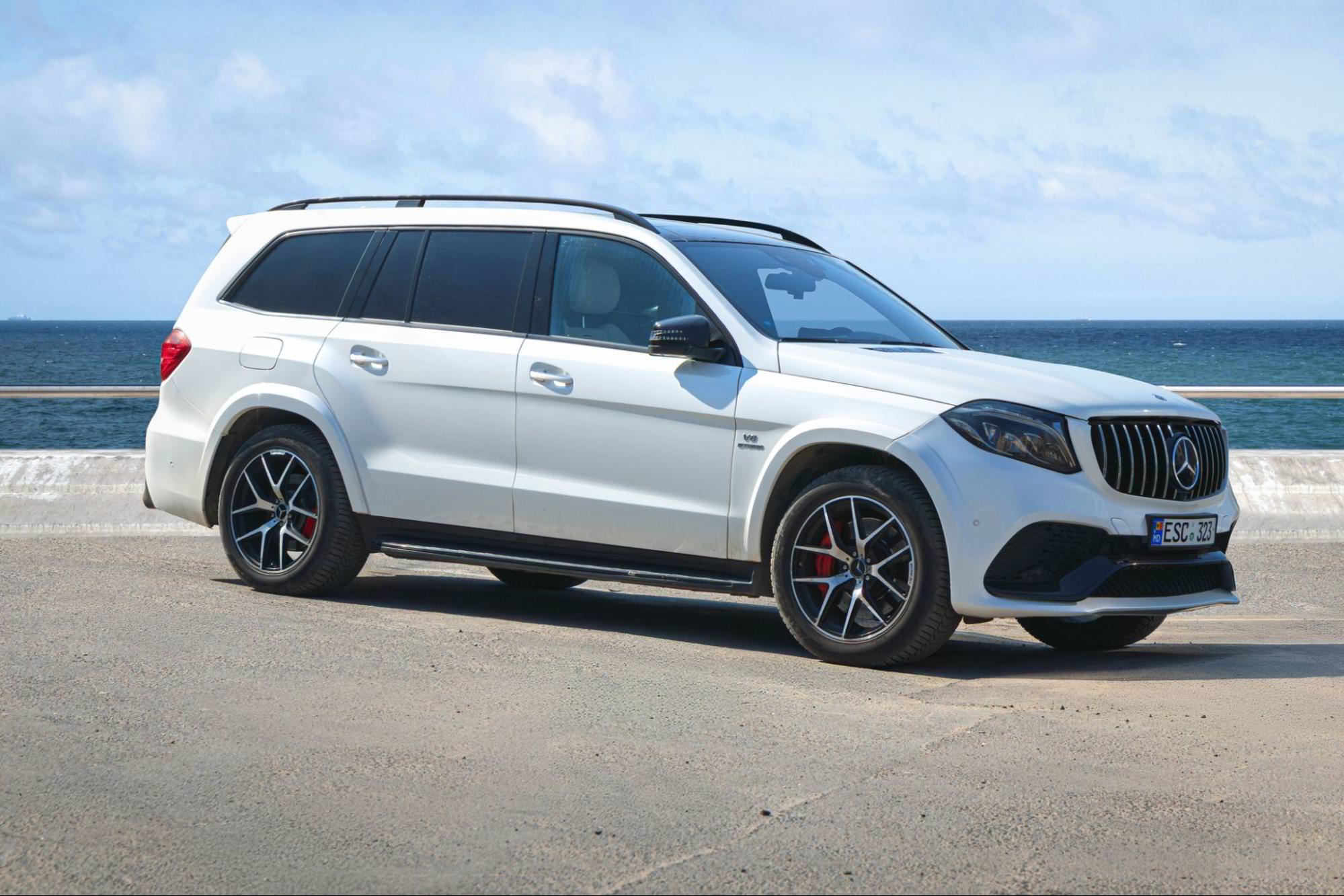
Regional Demand Shifts: Are SUVs Losing Value and Popularity in Southern Europe?
Find out if SUVs are holding value in Southern Europe. Explore sales trends, customer preferences, and what used car dealers should stock in 2025.
14 April 2025
Everything You Need to Know About State of Battery Health Certificates
Learn all about EV battery testing, SOH certificates, and how you can get one if your customer asks for it. You’ll also find why they’re useful but not mandatory.
28 March 2025
What Is the Residual Value of a Car and How to Calculate It?
Learn what the residual value of a car is, why it matters for car traders, and how to choose vehicles that hold their worth.
27 March 2025
How Does the Automotive Supply Chain Impact Used Car Prices?
Discover how supply chain issues impact used car prices and what that means for your dealership. Learn key trends, market shifts, and smart strategies to stay ahead in 2025.
25 March 2025
How Crit’Air Anti-Pollution Regulations in France Impact Car Traders
Learn how France’s Crit’Air system affects car dealers, where ZFE and ZPA restrictions apply, and how to get a sticker. Stay compliant, avoid fines, and sell smarter!
20 March 2025
Depreciation Rate of Used EVs - Do They Hold Value?
Wondering if EVs hold their value? Find out how they compare to petrol cars and what influences their resale over time.
12 March 2025
Best Used Electric Cars for Dealerships
Discover the best used electric cars to stock in your dealership. You’ll find high demand options ranging from budget-friendly EVs to long-range models.
28 February 2025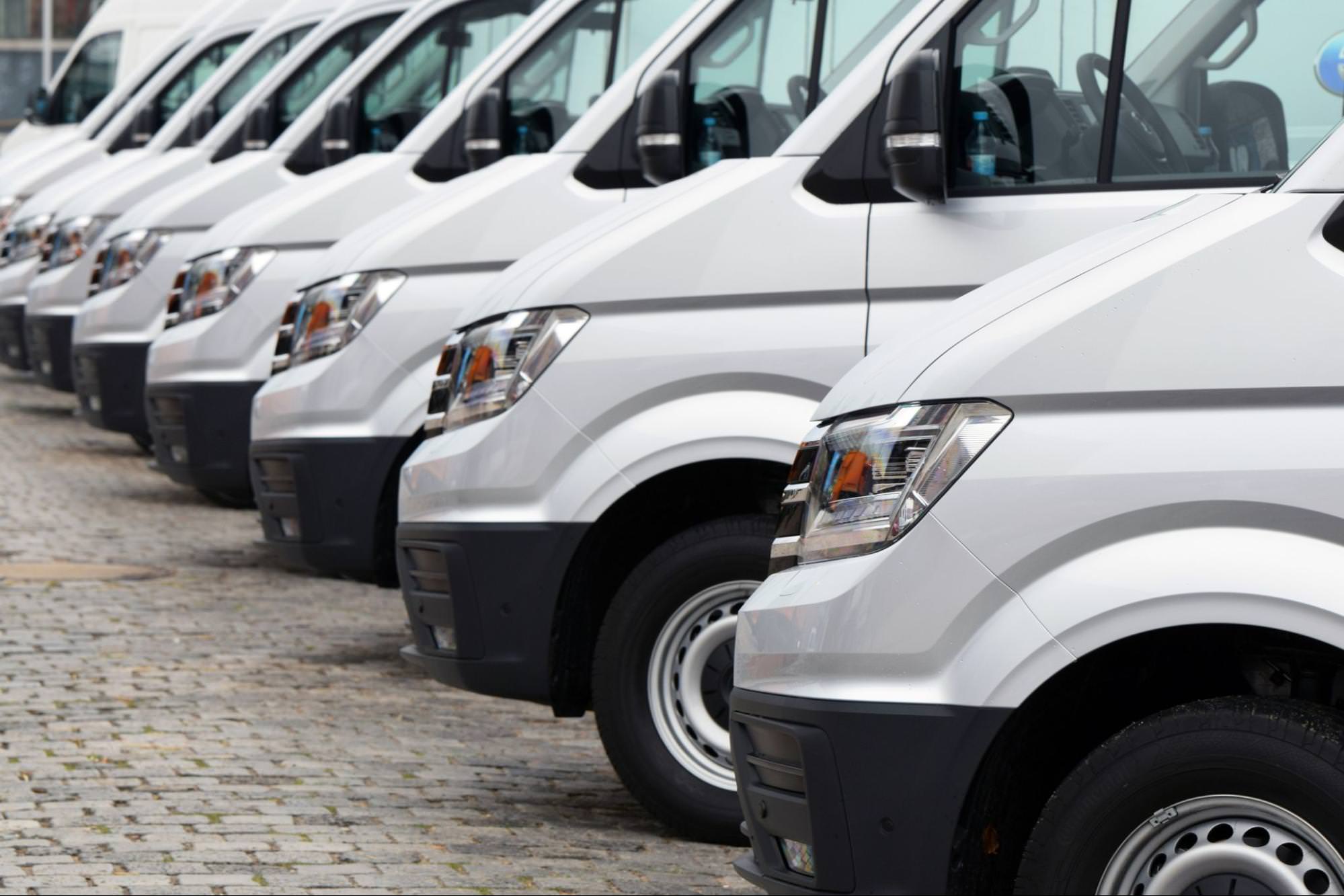
How to Buy a Light Commercial Vehicle for Your Business?
Looking for the right light commercial vehicle for your business? Learn how to choose the best van, compare costs, and avoid hidden expenses.
24 February 2025
Business Tips for Used Car Dealerships in 2025
Discover best practices for used car dealerships in 2025. Learn how to stock smart and find what market trends you should adapt to.
18 February 2025
Taxes for Hybrid Vehicles Imported to Portugal
Discover the latest import rules and incentives for EVs and hybrids in Portugal, take advantage of 2025 tax benefits, and source the best deals from the EU hassle-free.
17 February 2025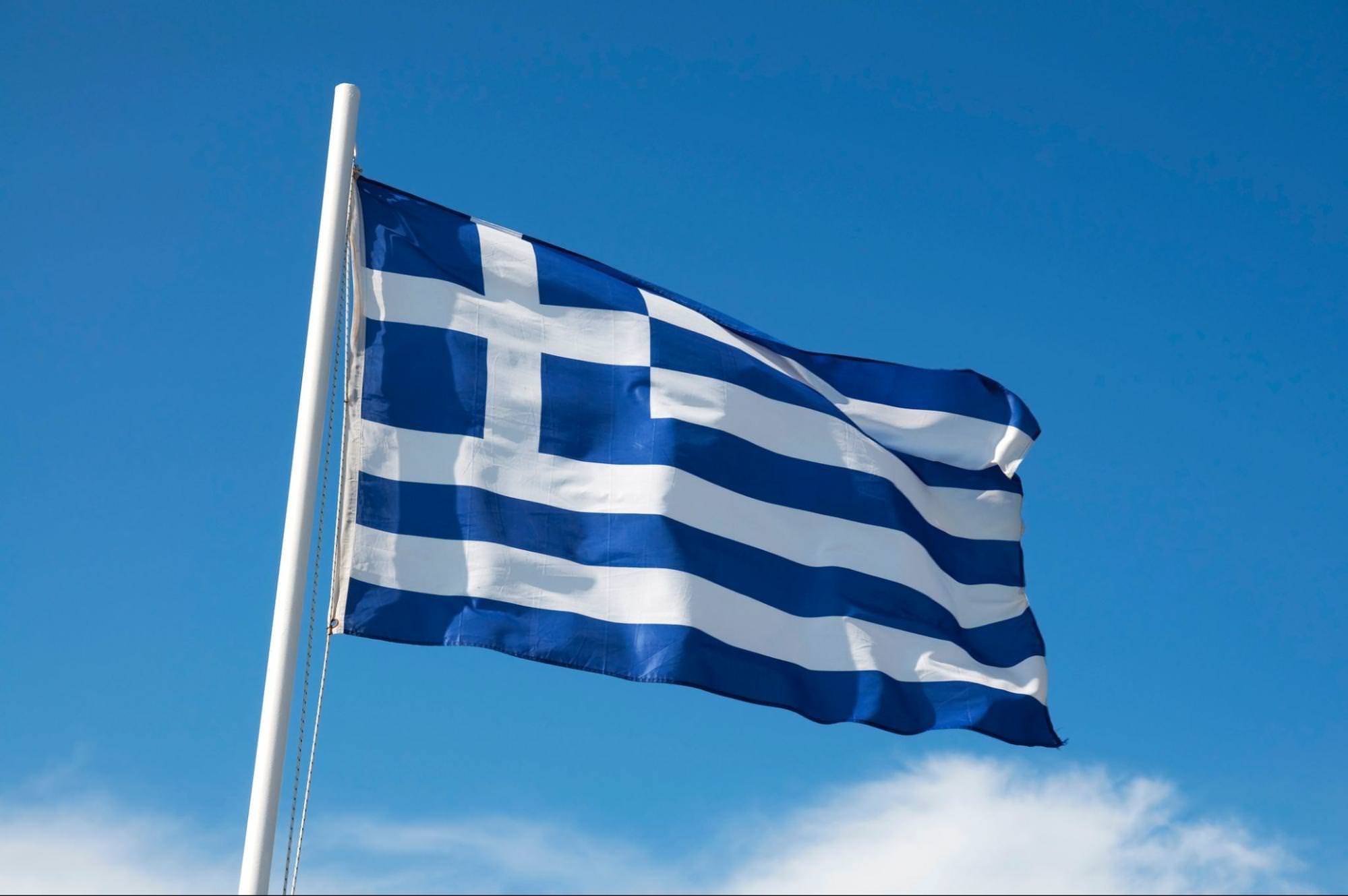
How to Import a Car to Greece
Learn all about importing a car to Greece, including necessary documents, tax details, registration steps, and transport options to make the process efficient.
14 February 2025
How to Buy Cars From Abroad
Want to expand your dealership’s inventory? You’ll learn how to buy cars internationally, from online inspections to transporting the vehicles.
31 January 2025
European Used LCV Market - What Can We Expect in 2025?
Discover trends, tips, and insights on the European LCV market in 2025. Learn how to source the best used vans and stay ahead in the business!
28 January 2025
Best Used Commercial Vehicles & Vans for Business to Buy in 2025
Discover the best commercial vans for 2025 and find out why they’re perfect for businesses and car traders.
28 January 2025
How to Import a Car to Hungary?
Learn how to import cars to Hungary with this step-by-step guide. From documents to taxes, get all the tips you need to expand your dealership.
23 January 2025
Will Used Car Prices Drop In 2025 in the EU?
Discover the used car prices 2025 forecast and learn how factors like supply, demand, and EU incentives will shape the future of the second-hand car market. Stay ahead with actionable insights for dealers!
14 January 2025
CO2 Emission Restrictions for Cars in 2025
Learn about electric vehicle trends and used car market opportunities, and discover how 2025 EU CO2 targets will affect car manufacturers and car traders.
31 December 2024
Regional Differences in Italy’s Bollo Auto: A Guide for Car Traders
Discover how Italy's regional bollo auto tax variations affect car trading. Learn about tax exemptions, strategic sourcing, and navigate regional differences effectively.
28 December 2024
Spain’s DGT Environmental Labels – Explanation for Used Car Dealers
DGT emissions sticker spain: Understand vehicle categories, access restrictions, and how upcoming emission zone regulations will impact your business in 2025.
27 December 2024
Best High-Mileage Cars to Trade in 2025
Discover top-performing cars with high mileage: Insights on reliable models, resale value and performance across European markets for diverse dealership strategies.
26 December 2024
E-Mail Marketing For Car Dealerships - A Guide
Learn how you can use email marketing to grow your car dealership with this overview of email tips, ideas and tools.
24 December 2024
Automation For Car Dealers - What Exactly Could You Automate By Yourself?
Discover how car dealership automation tools can boost your efficiency and drive sales. Find actionable ways to automate and grow your business in no time.
23 December 2024
Types of Electric-Powered Vehicles Explained
Discover the 5 key electric vehicle types, their market potential, and trading insights. Learn how to expand your inventory with BEVs, PHEVs and hybrid models that appeal to modern buyers.
18 December 2024
TOP 10 Best-Selling Used Cars in 2024 - eCarsTrade Data
Find out the best-selling used cars of 2024 and explore the most popular types of cars for your dealership. Learn which models are driving demand and boosting sales in Europe!
17 December 2024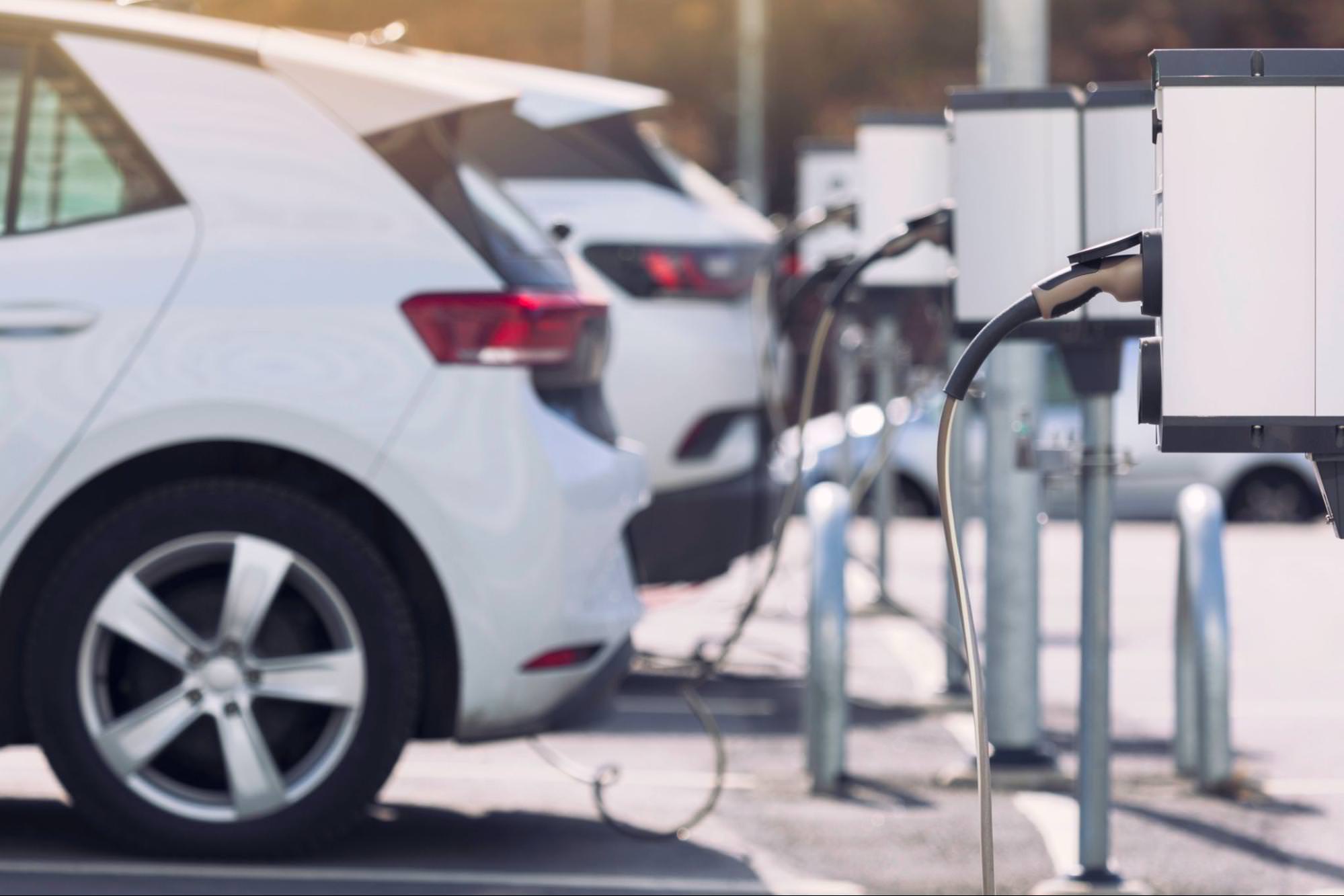
Electric Cars EU: Tax Benefits and Incentives in 2025
Get to know all the key government incentives for electric cars in the EU with this comprehensive guide.
12 December 2024
Seasonality in Car Sales
Unlock the secrets of seasonal car sales trends in Europe. Learn how to optimize your business strategy, manage inventory, and maximize profits through strategic insights into automotive market shifts.
29 November 2024
Keyword Research in Automotive SEO
Master keyword research for car dealerships – Learn how to attract potential buyers, optimize your content, and boost your search rankings with our step-by-step guide.
28 November 2024
Pricing Strategies for Car Dealers
Discover effective dealership pricing strategies, including market analysis, competitive pricing, and volume discounts to maximize profits and attract buyers.
26 November 2024
Increase of Automotive Taxes in France
2025 is bringing big changes to car taxes in France—discover how the new malus auto rules will impact vehicle costs.
25 November 2024
What Can a VIN Report Tell You?
Discover how a VIN number vehicle report can help you verify car details, uncover history, and check for damages. You’ll be able to make smarter buying choices right away!
22 November 2024
2024 Used Car Market Analysis in Europe
Explore 2024 used car market trends in Europe, with insights on demand, pricing shifts, and top-selling models to help your dealership stay ahead in the used car market.
21 November 2024
Guide for Traders: Car Taxes in Germany
Get to know the German car taxes so that your used car dealership can stay compliant with regulations and price vehicles accurately.
20 November 2024
Toyota History and 5 Facts Every Car Salesman Should Know
Explore the history and fun facts about Toyota, and you’ll have conversation starters ready for all your customer interactions both online and on your lot.
7 November 2024
Best Inventory Management Software For Dealers - eCarsTrade Ranking
Find the best automotive inventory management systems for your dealership and boost your efficiency and sales.
29 October 2024
Analytics and Predictive Analysis for Car Dealers
Boost car sales strategies with data! Discover how dealerships can utilize automotive marketing analytics to optimize sales and enhance customer satisfaction.
24 October 2024
Building a Sales Funnel in Automotive Sales
Get to know the automotive sales funnel and see how to create one that brings paying customers into your used car dealership.
16 October 2024
Copywriting for Automotive Websites - Best Practices for Dealerships
Master automotive copywriting with these dealership-focused tips. Improve customer engagement and drive more leads to your dealership.
10 October 2024
Social Media Marketing for Car Dealerships
Become an expert in social media marketing for car dealerships with these practical tips, platform insights, and content ideas that boost your online presence.
7 October 2024
How to Import a Car to Bulgaria
Find how to legally and efficiently import cars from the EU into Bulgaria, and supply your used car dealership with the most desirable models.
3 October 2024
How to Manage and Organize Your Dealership?
Prepare your used car dealership for success by mastering dealership management and setting the foundation for long-term profitability.
29 September 2024
How to Import a Car to the Netherlands
Learn how to import cars from the EU to the Netherlands as a car trader. Discover regulations, required documents, taxes, and a step-by-step process for successful imports.
27 September 2024
How to Compete With Larger Dealerships in Your Area
Learn effective strategies to compete with larger dealerships in your area. Gain insights on marketing, customer service, and car sourcing options.
26 September 2024
Best Marketing Channels for Dealerships and Automotive Businesses
Discover the best marketing channels for dealerships and automotive businesses. Learn how to effectively promote your car trading business and reach your target audience.
25 September 2024
What Impacts the Value of a Used Car and How to Price It Right?
Learn how to accurately value and price used cars for your dealership. Discover key factors, effective strategies, and tools to boost profitability and customer trust
24 September 2024
Mistakes You Should Avoid in Online Car Auctions
Recognize and avoid common used car auction mistakes so that you can confidently secure the best deals for your dealership.
23 September 2024
How to Import a Car to Belgium
Import cars from the EU to Belgium with our step-by-step guide for car traders. Get to know local trends, regulations, taxes, and paperwork easily.
21 September 2024
5 Mercedes Facts Every Car Salesman Should Know
Discover key Mercedes-Benz facts every car trader should know. From its rich history to popular models across Europe, boost your knowledge and sales potential.
20 September 2024
How to Import a Car to Romania
Discover the complete process of importing cars to Romania, from understanding regulations and taxes to handling documentation. Perfect for car traders!
19 September 2024
How to Set up a Car Showroom for Your Dealership?
Elevate your used car dealership with an automotive showroom that blends a great location, modern design, and inviting amenities, while highlighting top vehicles to boost sales.
18 September 2024
Europe EV Sales 2024 - Report and Market Forecast
Seeing some shifts in the used EVs market? You’re not alone. Read about the latest trends, challenges, and opportunities to keep your dealership successful.
16 September 2024
How to Import a Car to the Czech Republic?
Learn which used cars to buy and how to import them into the Czech Republic, so you can easily stock your dealership with vehicles that your customers are looking for.
12 September 2024
AI in Your Dealership - How Can Your Business Grow With AI?
Learn how AI can be used to transform your used car dealership, from optimizing inventory and pricing to enhancing customer service and increasing sales for faster business growth.
10 September 2024
How to Respond to Bad Reviews for Your Car Business?
Negative reviews on Google happen even to the best of dealerships! You’ll learn how to handle them effectively with real examples of great responses.
4 September 2024
How to Import a Car to Croatia
This step-by-step guide walks you through importing cars to Croatia as a trader. You’ll learn about the required documentation, fees, and regulations to comply.
29 August 2024
How Do Used Car Dealerships Make Money?
Discover more about how used car dealerships profit, from the nuances of vehicle acquisition and reconditioning to the complexities of in-house financing and after-sale services.
27 August 2024
EU Import Duties for Car Dealers and Traders
Learn about EU import duties for car dealers, including VAT, registration tax, and excise duty. This overview of import duties will help you prepare yourself for the process of importing cars to Europe.
23 August 2024
Facebook Advertising Ideas For Your Dealership
Unlock the full potential of Facebook ads for your car dealership. Explore creative ad ideas to increase customer engagement, boost traffic, and drive more car sales.
21 August 2024
Expert Tips from eCarsTrade for New Dealership Owners
We’re sharing our tips on running successful used car dealerships! Discover expert strategies to streamline your operations and draw in more buyers.
15 August 2024
5 Skoda Facts Every Car Salesman Should Know
Discover essential insights about Skoda, covering profit margins, resale values, and the brand's market advantages to boost your car dealership business.
12 August 2024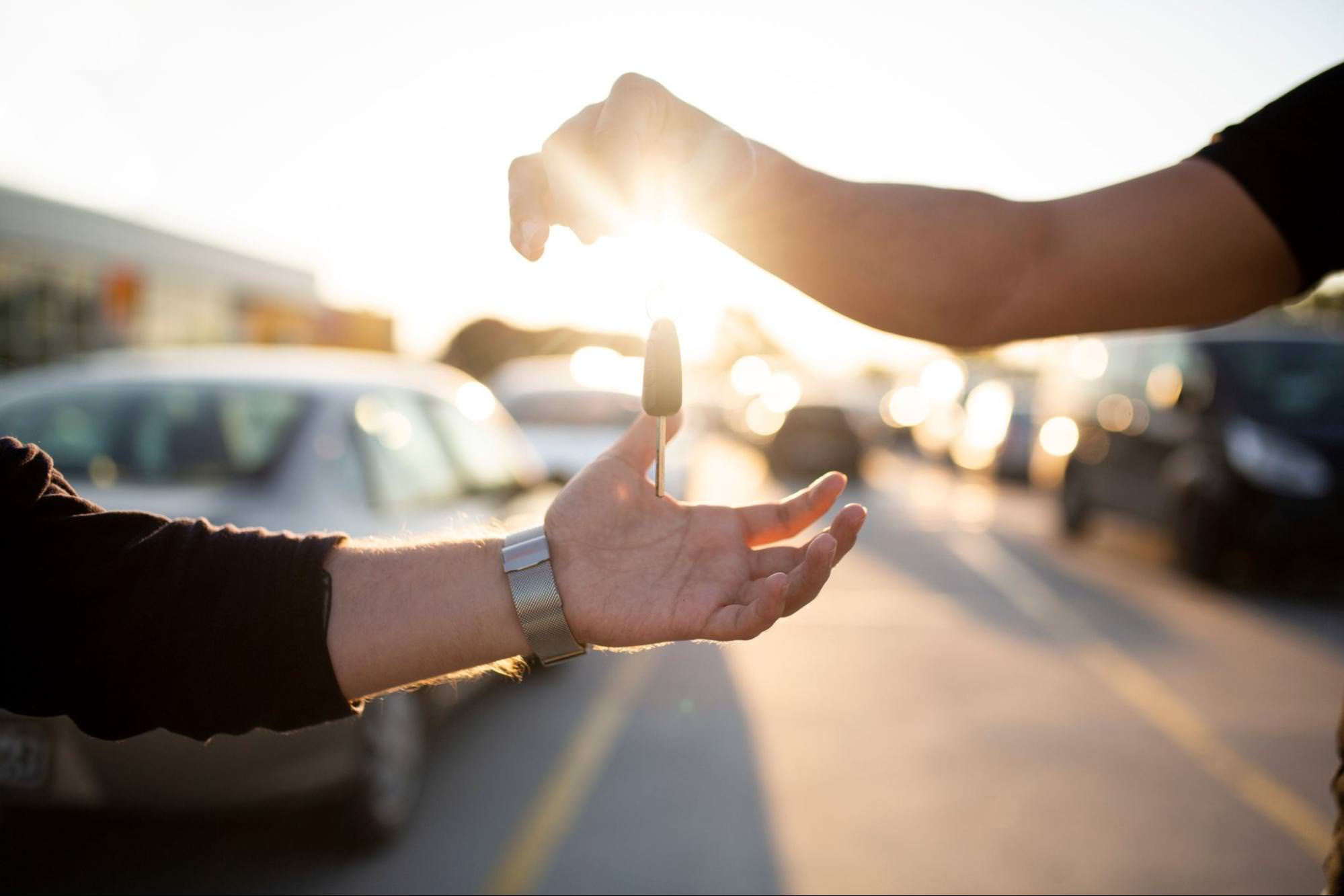
5 Ideas to Improve Customer Satisfaction in Your Dealership
Boost your dealership’s customer satisfaction with these effective strategies. From improving digital experiences to providing flexible financing options, you’ll find five ideas to make your dealership and its customers thrive.
6 August 2024
Struggling With Losing Leads? We Are Going to Tell You Why
Learn why car dealerships lose automotive leads due to poor follow-up, bad customer service, ineffective communication, and more. Improve your lead conversion today!
31 July 2024
How to Sell More Cars at a Car Dealership?
Discover how to sell more cars at your dealership with effective strategies. Find tips about handling customer interactions, optimizing inventory, and using digital marketing to boost your visibility.
26 July 2024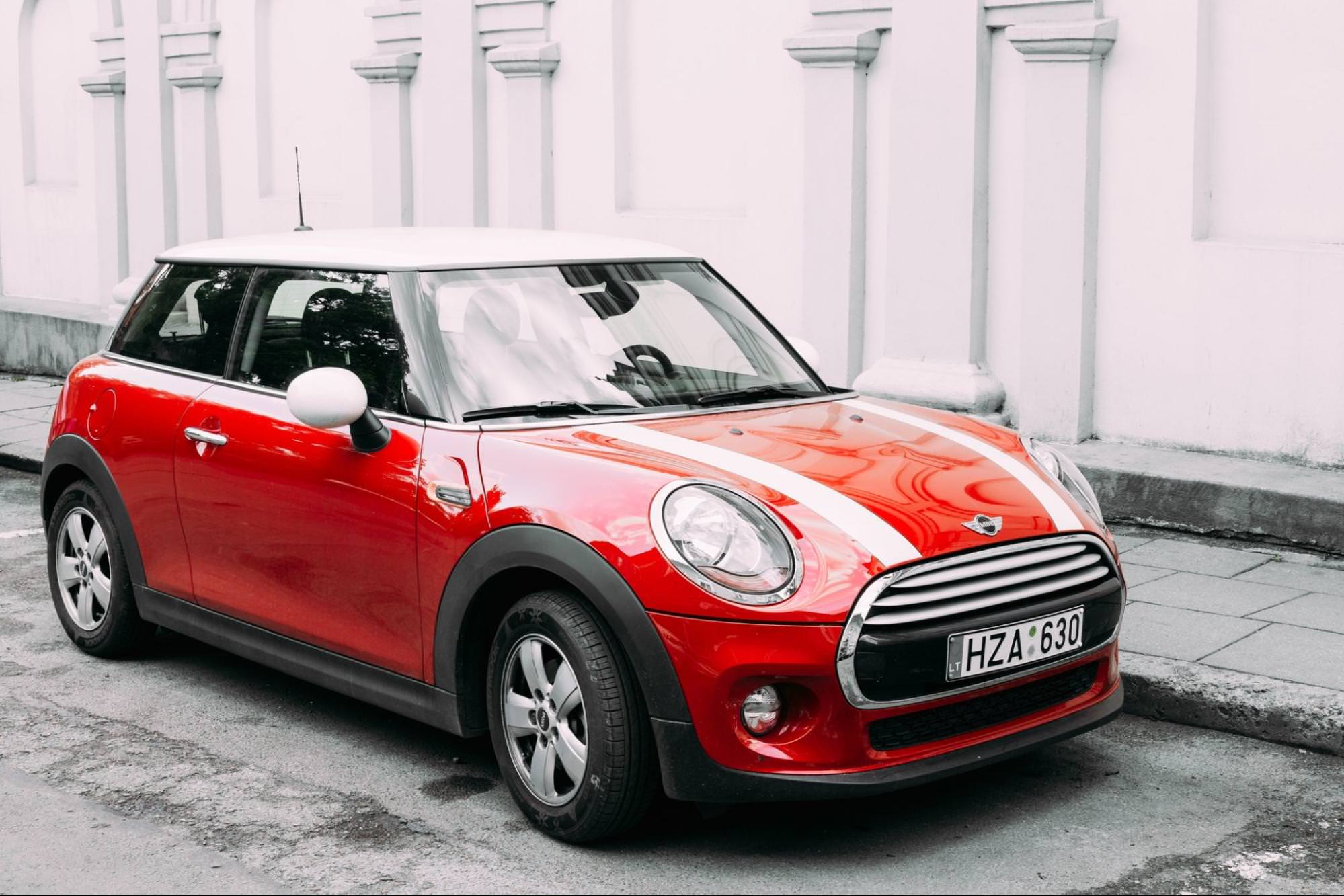
5 Mini Cooper Facts Every Car Salesman Should Know
Discover how Mini cars combine classic appeal with contemporary innovation, making them a smart investment in driving pleasure. Check out our Mini fun facts!
19 July 2024
Roadworthiness Certificate in the EU - What EU Dealers Should Know
Stay compliant and keep your vehicles safe with our easy-to-follow guide on roadworthiness certificates. Find out what an RWC is and when car traders need it.
15 July 2024
Mistakes You Should Not Make if You Are a New Dealership
Avoid the big four common problems in car dealerships and set yourself up for success. Learn effective solutions to grow your customer base.
4 July 2024
How to Import a Car to Poland
Discover how to import cars to Poland from EU in this step-by-step guide for traders. Learn about regulations, taxes, and process to maximize profits in the Polish market.
29 June 2024
BPM Tax in the Netherlands - What Is It and How Is It Calculated?
Learn about BPM tax in the Netherlands: what it is, how it's calculated, and why it matters for car traders. Discover how eCarsTrade simplifies the process.
28 June 2024
5 Purchased Cars from Belgian Auctions to a Dealership in Portugal - See the Whole Process!
Explore the journey of purchasing five cars from Belgian auctions to a dealership in Portugal. Follow the entire process from start to finish!
27 June 2024
Used Car Market in Europe: Q1 and Q2 2024 Trends and Analysis
Explore the latest trends in the European used car market for Q1 and Q2 2024, and discover key developments to help your dealership thrive in quarters to come.
26 June 2024
Building Relationships with Customers - A Few Tips from Sales Experts
Discover expert tips for building relationships with customers. Learn strategies from sales experts to foster trust and loyalty in your business.
25 June 2024
5 BMW Facts Every Car Salesman Should Know
Discover 5 fascinating BMW facts every car trader should know. From aircraft engines to surprising motorsport history, boost your BMW expertise now.
24 June 2024
How to Import a Car to Germany
Learn the process of importing a car from the EU to Germany as a car trader. Discover Germany's import regulations, required documentation, taxes, and a step-by-step guide.
23 June 2024
Volkswagen Facts Every Car Salesman Should Know
With a rich and complex history, Volkswagen has left a definite mark on popular culture. So why not charm your customers with some fascinating Volkswagen facts?
22 June 2024
Automotive Marketing Software: Must-Have Tools for Dealerships
Optimize your dealership's success with automotive marketing software for better insights and engagement. Boost sales and visibility with our expert recommendations!
20 June 2024
How to Import a Car to Spain
Learn how to import cars from the EU to Spain as a dealer. Regulations, taxes, paperwork, and process covered in this step-by-step guide.
18 June 2024
Why Is the After-Sales Experience So Important in the Automotive Industry?
Learn why the after-sales experience is crucial in the automotive industry. Find how you can tweak it to boost customer satisfaction and success for your dealership.
15 June 2024
5 Mazda Facts Every Car Salesman Should Know
Impress your customers with these 5 essential Mazda facts for a successful sales pitch. From the name and logo trivia to innovative safety features, these facts will help you seal the deal.
13 June 2024
How to Import a Car to France?
Learn how to easily import cars to France with the eCarsTrade guide for used car dealers. Read all about the necessary documentation and the step-by-step process.
10 June 2024
Battery Lease for Electric Cars - Everything You Want to Know
Discover everything you need to know about battery leasing for certain electric vehicles and get informed about costs, advantages and monthly payments.
5 June 2024
Nissan Fun Facts Every Car Salesman Should Know
Discover six interesting facts about Nissan to use in your dealership’s marketing and sales pitches. Your customers will find them mind-blowing!
31 May 2024
Which Dealership Software Tools Do Successful Dealers Use? Let’s See!
A successful dealership relies on car dealer software solutions and tools to manage its operations, from inventory management to handling relationships with customers.
27 May 2024
6 Peugeot Fun Facts to Tell Your Potential Customers
Discover fun facts about Peugeot history and learn who makes Peugeot. Explore the brand's legacy, key milestones, and the company driving its success.
22 May 2024
Everything You Need to Know to Create a Business Plan for Your Used Car Dealership
Get started with your car dealership business plan: Simple and easy guide to building successful strategies for selling used cars.
17 May 2024
How to Plan and Write Automotive Content That Ranks on Google
Writing car content can be easy with these SEO tips, keyword research strategies, and effective content writing techniques. Boost your dealership’s visibility on Google!
13 May 2024
6 Audi Fun Facts to Tell Your Potential Customers
Equip yourself with stories and fun facts about Audi to impress your customers. Whether you’re closing sales or just sharing your passion for cars, these Audi facts will make an impact.
9 May 2024
Petrol vs. Diesel vs. Hybrid vs. Electric - Understand Your Options
What are the pros and cons of petrol, diesel, hybrid, and electric vehicles? Learn all about your options and stand out in the used car market.
29 April 2024
Types of LCVs for Businesses and Fleets
Discover the various types of Light Commercial Vehicles (LCVs). From panel vans to pick-up trucks, learn about distinct uses and benefits for your business.
26 April 2024
What Is a COC (Certificate of Conformity) and How to Get It?
Certificate of Conformity (COC) decoded: A must-read for car dealerships. Simplify compliance, streamline transactions, serve customers better.
24 April 2024
How to Import a Car to Italy
Discover how to import a car to Italy with ease. Learn about regulations, documentation, taxes, and registration in this simple, comprehensive guide.
30 March 2024
How to Increase Your Dealership’s Profitability and Sell More Cars in 2024?
Proven strategies that can elevate your car dealership's profitability. Learn how smart inventory choices, market analysis, and a strong online presence can drive more sales.
28 March 2024
Inventory Management in Your Car Dealership - Do You Know How to Do It Right?
Discover effective inventory management strategies for car dealerships to optimize stock, enhance sales, and outperform competitors.
27 March 2024
How to Import a Car to Portugal
Don't miss out on profitable car imports to Portugal. Get the step-by-step guide and knowledge you need on taxes, regulations, and insider tips today.
26 March 2024
Where Do Dealers Get Their Vehicles and Used Cars From?
Discover where used car dealers get cars, from auctions to trade-ins and direct purchases, with pros and cons for each method to help you grow your stock.
25 March 2024
Can You Profit From Buying Damaged Cars?
Think damaged cars are a risk? Think again! Learn how to buy, repair, and sell damaged cars to boost your car trading business and unlock hidden profits.
24 March 2024
Automotive SEO for Car Dealerships - Tips from the eCarsTrade SEO Team
Boost your car dealership's online success with automotive SEO tactics. Discover how to increase sales, drive traffic, and outpace the competition. Learn more!
21 March 2024
Is 2024 the Year to Start Investing in Hybrids and EVs?
Electric and hybrid vehicles offer great opportunities to skilled used cars dealers who know how to respond to consumer preferences even in a slowing market.
21 March 2024
WLTP Standards – Everything You Need to Know
All the questions you had about the WLTP standard and CO2 emissions answered simply and clearly by eCarsTrade automotive experts.
18 March 2024
Solving Common Bidding Struggles on eCarsTrade
Discover easy solutions to common bidding struggles with our guide. Learn how to bid smarter and win more on eCarsTrade auctions for car traders.
7 March 2024
SUVs with the Highest Resale Value - eCT Experts Opinion
To increase your used SUV sale volumes and profit margins, read our list of high-resale value SUVs and learn tips and tricks from eCarsTrade experts.
28 February 2024
Transporting and Shipping Multiple Vehicles Within EU
Learn how to ship multiple cars within the EU. Find the fastest, safest, and most cost-effective methods for transporting vehicles from auctions to your dealership.
26 February 2024
5 Ways to Improve the Digital Outreach of Your Dealership
Most consumers start their search for a new car online, so your car dealership's digital outreach is crucial to its success. Here's how to ensure the effectiveness of your car dealer advertising ideas.
22 February 2024
How to Keep Your Customers' Loyalty in 2024
Learn the industry tricks and best practices of increasing customer retention and loyalty to quickly grow your used car dealership business the easy way.
21 February 2024
Will Used Car Prices Drop in 2024? The Future of the Used Car Market
Dive into a deep analysis on the state of the used and new car market in late 2023 and read our predictions for used car pricing in 2024.
19 January 2024
eCarsTrade Announces Dirk Van Roost as CFO
In a new step towards strengthening its leadership team, eCarsTrade is proud to announce that Dirk Van Roost recently joined as its new Chief Financial Officer (CFO), to help steer the leadership and finance teams, driving profitable growth.
11 January 2024
7 Best Used Hybrid Cars You Can Buy Today as a Car Trader
Looking to invest in a reliable hybrid car? Check out our list of the top 8 best used Hybrids to buy in 2024, all available on eCarsTrade.
30 December 2023
How to Stay Safe when Buying Cars in Online Auctions?
Discover essential security tips for online car auctions: from safe bidding practices to advanced features, build trust and stay safe in the digital marketplace.
29 December 2023
NEDC vs WLTP - Navigating Emission Standards in the EU Used Car Market
Everything used car dealers need to know about NEDC and WLTP procedures for measuring CO2 values to verify compliance with EU emission regulations.
27 December 2023
Car Auction Bidding: Strategies and Tools for Success
Discover expert strategies and tools like eCarsTrade to win car auctions. Learn bidding techniques, auction types, and avoid common pitfalls.
12 December 2023
The Ultimate Guide to Buying Used Cars in Online Auctions
Navigate the world of online car auctions in Europe like a pro! Discover essential tips and tricks on how to buy a used car from these platforms with confidence and ease.
7 December 2023
Learn All About These 7 Types of Online Car Auctions: An Insider Guide
Read all about car auctions, their different types, and the bidding process so you can start buying cars today with convenience and at incredible prices.
6 December 2023
The Trader's Guide to Buying a Used Car: 6 Must-Ask Questions
Discover essential questions for successful used car trading. Find great deals at eCarsTrade, your trusted partner in the automotive market.
18 October 2023
How to Start a Used Car Dealership
Read our step-by-step guide for starting a used car dealership to find expert advice on building a strong and successful business.
15 October 2023
Hybrid Cars: A Guide for Used Car Dealers
Let’s take a look at the available types and the current market of hybrid cars for used cars sellers with main selling points and common concerns.
31 August 2023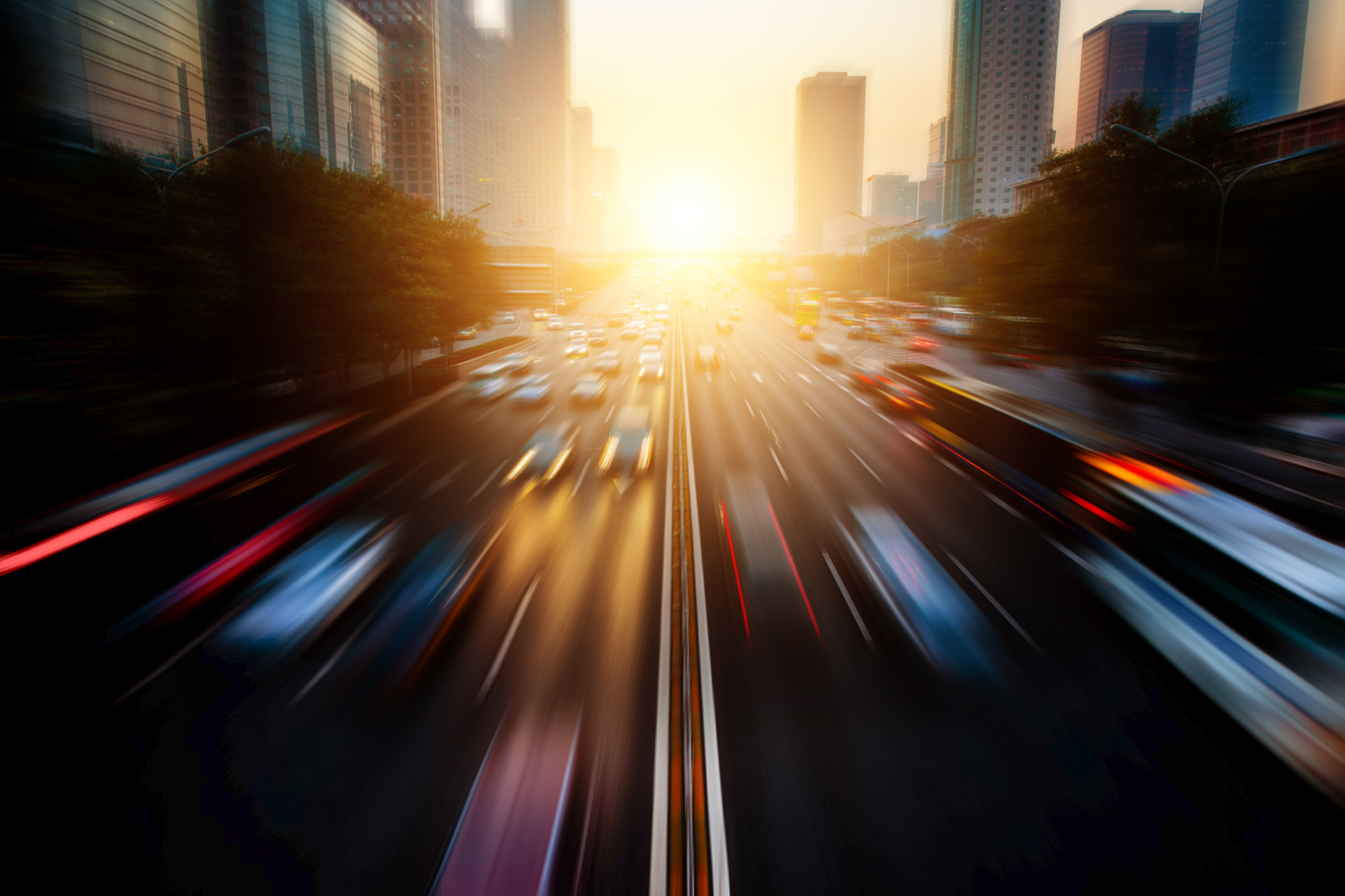
What's new on the used car market? Rise of AI & SUV sales in Europe
Inflation, digitalization and everything else traders and private customers need to know about the 2023 used car market with a forecast for 2024.
31 August 2023
How To Shop for Used Cars: Expert Tips for Traders
Expand your sales and build a loyal client base with our practical tips for choosing the right vehicles for your used car dealership.
31 July 2023
6 Best Small City Cars
Discover the best small car for city driving, offering car traders high sales volumes, market popularity, and reliability for profitable returns.
31 July 2023Could Water Shortage Be the Next Semiconductor Crisis?
How water shortages are affecting the car industry and how dealers and buyers can help solve the crisis.
4 July 2023
What Is Good Mileage for a Used Car?
Make sure you’re getting your money’s worth when buying a used car with our guide to mileage and other indicators of car condition.
14 June 2023
How to Fill Out a CMR Form - Ultimate Guide
What is a CMR? How to fill out a CMR? We got you covered! Let’s dive into all the details behind this important road cargo document.
13 June 2023
Exploring the Automotive Industry - An Interview with the CEO of eCarsTrade
Filipp Sevostianov, the CEO of eCarsTrade, shares his thoughts about the used car industry, the post-pandemic automotive world, and what’s in store for the future of eCarsTrade.
10 May 2023
5 Amazing Video Tips That Will Transform Your Car Business
Video marketing is stronger than ever! Learn how to take amazing videos of your cars and boost the success of your car dealership.
5 May 2023
Our 11 tips on Training Car Salespeople
Elevate your car sales business with our salespeople training tips, and ensure your buyers always get an exceptional experience.
4 May 2023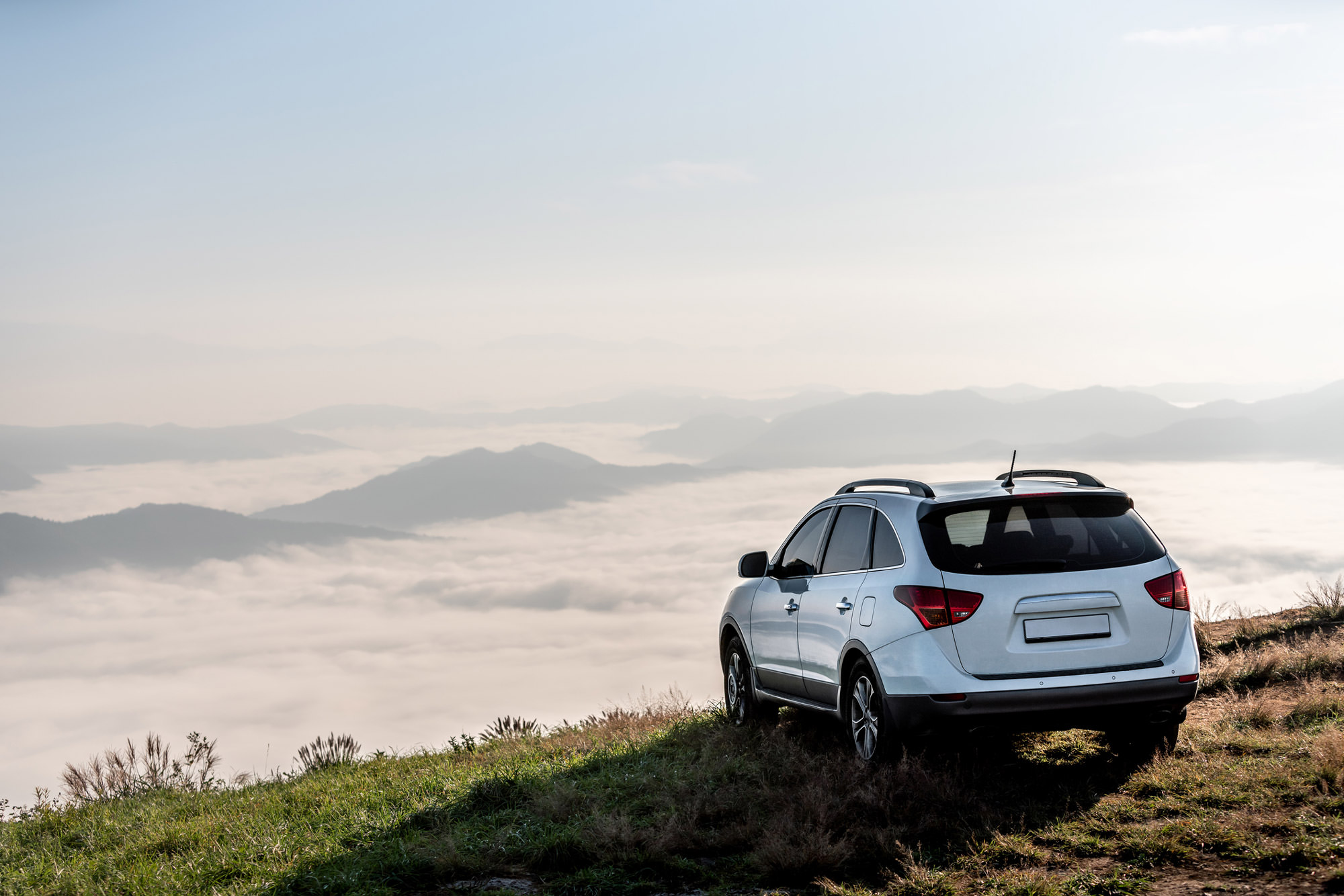
9 Best Used SUVs You Can Buy Today
Looking to invest in a reliable SUV? Check out our list of the top 9 best used SUVs to buy in 2025, available on eCarsTrade.
3 May 2023
2023 Guide to Car Emissions: What Every Buyer in Europe Should Know
Buying a car but you’re worried about air pollution? Read this article and get a rundown on key facts, considerations, and EU legislation for car CO2 emissions.
28 April 2023
Will Used Car Sales Change in Europe in 2023? A Complete Analysis
How has the European used car market been evolving in 2023? Let’s deep dive together into used car sales in Europe and what’s in store for the rest of the year.
28 April 2023
Boost Your Car Dealership Success With These 5 Online Brand Strategies
Find out everything you wanted to know about car dealership branding and learn how you can elevate your own brand using the power of the internet, smart design practices, and modern technology.
20 March 2023
9 Common Car Dealership Sales Mistakes and How to Fix Them
Car dealerships are a balancing act of selling cars, sourcing stock, and keeping customers happy. Find out how to tread this line successfully and fix the most common mistakes!
15 March 2023
How to Buy a Car at an Online Car Auction? Tips From eCarsTrade Sales Team
Let’s dive together into questions about online car auctions, purchasing process, bidding and car shipping that, among many others, our sales team answers on the daily!
15 March 2023
2023 Electric Vehicle Trends: The Rise of EV Remarketing
Read all about the opportunities, challenges, and unanswered questions of electric vehicle remarketing as EVs take centre stage of European transportation.
6 February 2023
How to Transport Cars Between Dealerships
Transporting your vehicles is an essential part of a car dealership business. Find out which option will save you the most time and money!
5 February 2023
Are Online Car Auctions Actually Safe? - 7 Car Auction Myths
Online car auctions are still veiled by some common misconceptions. Let's bust some myths together and learn how auctions can help you build the stock of your dreams!
24 January 2023
6 Digital Marketing Strategies for Car Dealerships in 2024
Learn about some of the fundamental and most effective digital marketing strategies and take your automotive business to the next level.
22 January 2023
7 Tips on How to Repair Minor Car Damage
Selling a car with repaired minor damages can increase your profit. Read our guide on how to do minor car repairs with damages such as scratches, dents, and cracks.
16 December 2022
How to Take Photos of Used Cars to Increase Sales - A Practical Guide for Traders
Our step-by-step guide on how to take great photos of used cars for your car dealership. Take professional photos for your car business and boost sales!
14 December 2022
Top 5 Best and Most Reliable Used Cars to Buy
Discover these 5 car models that have been revealed as some of the most reliable cars by one of the biggest automotive surveys in Europe.
15 November 2022
Should You Buy a Used Electric Car as a Car Trader? All You Need to Know
The electric vehicle (EV) market in Europe continues to evolve rapidly. As a car trader, understanding this shift can help you take advantage of new opportunities — especially in the growing segment of used EVs.

Should You Buy a Damaged Car? Our Guide to Pros and Cons
Everything you need to know about buying a damaged car, including pros, cons, tips, and how to buy them at eCarsTrade.
30 September 2022
5 VIN Check Decoders to Help You Find Out Your Used Car's History
Find out your used car's history with the help of these 5 VIN decoders for Europe. VIN decoders allow you to get a vehicle history report to avoid buying or selling cars with accident history, mileage fraud, or hidden damages.
12 September 2022
Evaluate a Used Car Like an Expert in 7 Easy Steps (+ Bonus Tip!)
Discover these 7 easy steps that will help you evaluate a second-hand car and learn all about buying the best cars for your automotive business.
16 August 2022
Volkswagen plans to acquire Huawei's self-driving vehicle unit
Volkswagen aims to compete with Tesla by purchasing Huawei's self-driving vehicle unit. The two companies will form a joint venture with Volkswagen providing the funding and Huawei providing the technology.
3 March 2022
Chip shortage will extend into 2022
Deloitte is predicting the chip shortages likely to last through 2022 and we should be prepared for longer lead times and possible delays.
23 February 2022
Renault, Nissan, Mitsubishi alliance plans to take over the EV market by 2030
The French-Japanese automakers are planning to deepen their cooperation. The parties will spend 23bn Euros in the next five years on electrification, leading to 35 new EV models by 2030.
21 February 2022
BMW Marks 50th Anniversary of M Division
Customers who will choose a BMW M car or n M Sport package produced from March 2022 can have their vehicle’s wheel hub caps decorated with emblems inspired by the classic "BMW Motorsport" logo.
7 February 2022
Passenger car registrations across the European Union in 2021
According to ACEA data sales of new cars in the EU fell by 2.4% to 9.7 million units in 2021 breaking the previous low record of 2020.
27 January 2022
Classifieds vs Auctions - Where to Buy if You Are a Car Dealer
Learn what classifieds are, how they work, and how they compare at auctions and other ways of finding the right cars for your dealership.
20 January 2022
Is an Ex-Leased Vehicle a Good Alternative to a Private One?
Discover why buying a previously leased car is a smart choice for your dealership. Learn about their benefits, variety, and how to buy ex-lease vehicles easily through eCarsTrade.
15 July 2021
7 Steps to Win a Car at Dealer Auction
Good luck is a direct consequence of preparation! Our goal is for your next auction experience to be both profitable and successful. We have published this article to offer you some tips and tricks that will ensure your next experience is a good one. Check out these seven tips to win your next auction!
7 July 2021
How COVID-19 Affected the Used Car Market
Recently we have seen a significant change in the buying patterns of those purchasing vehicles. Statistics show the volume of new vehicle purchases has decreased, with the lower sales numbers attributed to major events happening in the global economy.
2 July 2021
New eCarsTrade Design
We are excited to announce the launch of our newly redesigned website. More information on our cars, fully responsive layout for all platforms, new languages – we hope you’ll find it easier to navigate and find what you’re looking for quickly and efficiently.
1 July 2019
eCarsTrade goes Mobile!
eCarsTrade.com is now available on all your favourite devices all the time, everywhere. This way, you can follow your favourite bids online using the unique eCarsTrade platform and monitor your purchases wherever you are!
12 March 2018